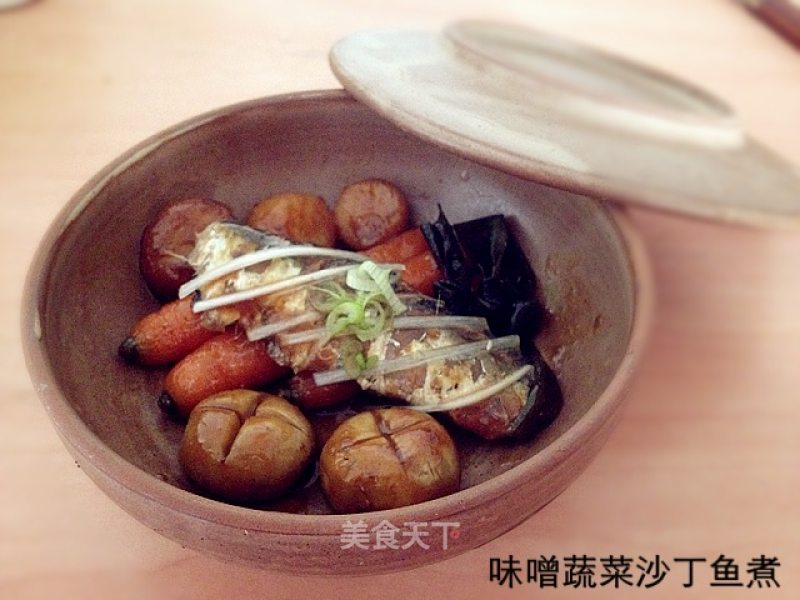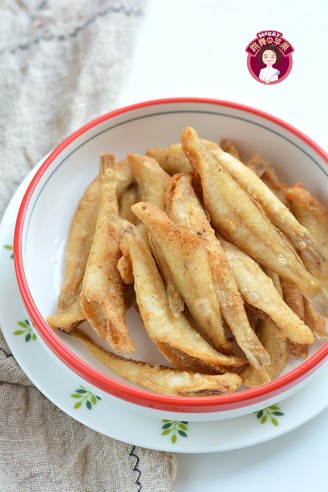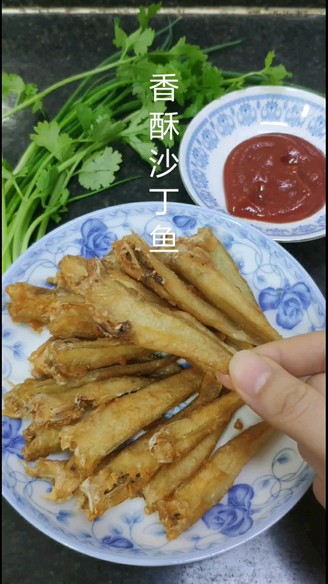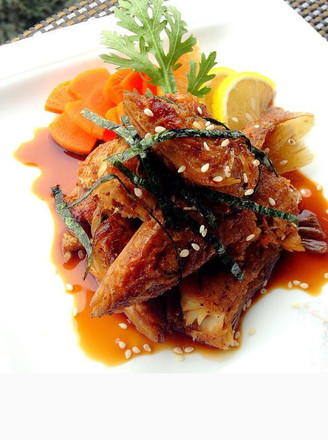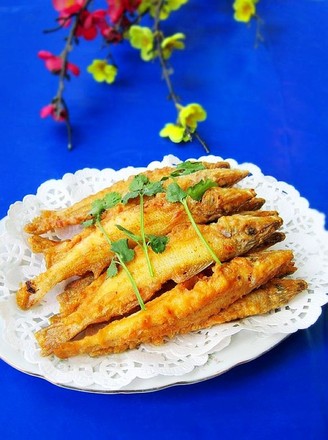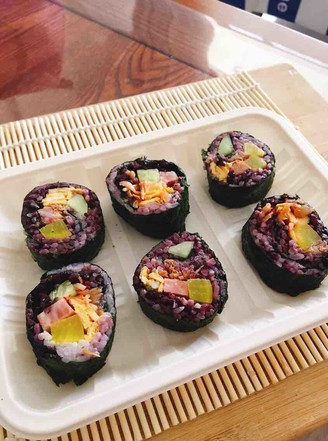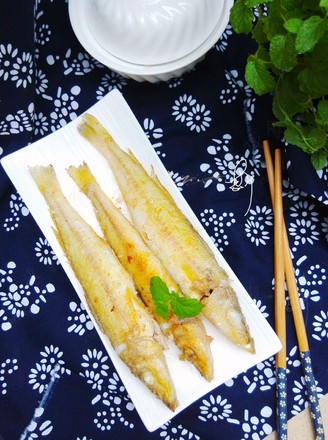Miso Vegetable Sardine Boiled
by barbaragaoyun
Favorite
Difficulty
Normal
Time
30m
Serving
2
I recently borrowed a book introducing various sauces of Japanese cuisine from a friend. I was like a treasure. I copied all the sauce recipes. I am eager to try many of them. The Japanese are famous for eating fish. It just so happens that I am also quitting all kinds of meat recently, and fish has become a good choice for me. Yesterday, I bought five kinds of fish in one go (one of them is a small squid, hehe). I used to buy salmon the most. Sometimes I also buy mackerel and sea bream. Now I am slowly starting to try more kinds of fish.
My favorite way to eat fish is to make sashimi or mixed raw fish in Korean style (the raw fish is cut into shreds with some cold noodle sauce, bean sprouts and pears, the taste is very refreshing, you can try it if you like) , The fish bones are used to make the soup, ha ha, it is really no waste at all. Decided to try boiled food today.
The book introduces two kinds of boiled fish sauces, I used miso fish sauce today, and a braised fish sauce. Miso fish sauce is suitable for fish with a more fishy taste, such as mackerel and sardines. The braised fish sauce is suitable for white fish with a lighter smell, such as sea bream.
Of course, the vegetables in this dish are what I like. I use the ingredients I have at home, such as horseshoe, kelp, mushrooms, and baby carrots. It's spring now, and the sauce of this dish is very suitable for cooking spring seasonal root vegetables, carrots, burdock, etc., as well as konjac, shiitake mushrooms (I used mushrooms), lotus roots and so on. This simple sauce can make you eat a lot of vegetables, especially root vegetables that are not usually cooked. It is also good as a bento dish, and it can be presented beautifully, which really amazes friends.
The bonito konbu broth is an important aspect of Japanese cuisine. It seems dispensable, but it is actually very important. Without it, it always feels that the cuisine is lacking the soul. No matter how beautiful it is, it is just an empty shell. The taste of bonito is really wonderful, it has a little grilled umami, and the sea has a natural sweetness. When the two are combined, it is no different from monosodium glutamate.
For children like me from the interior, the initial impression of sardines is that when the composition describes the crowded bus, they always describe it as canned sardines. Later, books about health always mentioned that it is rich in Omega-3s, EPA and DHA which can promote health. These basic fatty acids can help the blood flow smoothly in the body, maintain a healthy heart, and prevent the possibility of cardiovascular disease. Simply put, sardines are an important way to maintain a healthy heart.
Bonito kelp broth (first broth)
Material: water: 1000ml seaweed: 10cm bonito flakes: 30g
Method: 1. Wipe the dust on the surface of the kelp with a twisted wet gauze. Do not rub the white powder attached to the kelp. This is the key to the deliciousness of kelp.
2. Soak the kelp in the water for more than 30 minutes. Slowly boil the kelp over medium heat until it boils. Remove the kelp, turn to a low heat, add the bonito flakes and cook for about 3 to 30 seconds. Remove the foam and let it stand for 2 minutes. , Let the bonito flakes sink into the bottom of the pot naturally.
3. Lay gauze on the strainer and filter the broth, which is the first broth.
Uses: Dashi is the basis of Japanese cuisine, used in clear soup, steamed in clay pots, and steamed dishes.
Note: Do not squeeze the filtered bonito flakes, otherwise it will produce a fishy taste and turbidity in the broth, which will affect the flavor. The first broth is prepared in a very short time and directly presents the delicious ingredients of bonito flakes and kelp flakes. The soup is transparent and enjoy the flavor of the soup itself.
Dashi kelp broth (the second broth)
Ingredients: water: 500ml bonito flakes: 10g kelp and bonito flakes extracted in the first broth. Method: add water to the pot, put the kelp and bonito flakes extracted in the first broth, slowly over medium heat Take out the kelp before boiling, and add new bonito flakes to supplement the bonito flakes. Continue to cook for about 5 minutes on low heat until the deliciousness of the bonito flakes is released. Filter the broth with a cloth.
Uses: Used in mellow stewed dishes or miso soup. "
My favorite way to eat fish is to make sashimi or mixed raw fish in Korean style (the raw fish is cut into shreds with some cold noodle sauce, bean sprouts and pears, the taste is very refreshing, you can try it if you like) , The fish bones are used to make the soup, ha ha, it is really no waste at all. Decided to try boiled food today.
The book introduces two kinds of boiled fish sauces, I used miso fish sauce today, and a braised fish sauce. Miso fish sauce is suitable for fish with a more fishy taste, such as mackerel and sardines. The braised fish sauce is suitable for white fish with a lighter smell, such as sea bream.
Of course, the vegetables in this dish are what I like. I use the ingredients I have at home, such as horseshoe, kelp, mushrooms, and baby carrots. It's spring now, and the sauce of this dish is very suitable for cooking spring seasonal root vegetables, carrots, burdock, etc., as well as konjac, shiitake mushrooms (I used mushrooms), lotus roots and so on. This simple sauce can make you eat a lot of vegetables, especially root vegetables that are not usually cooked. It is also good as a bento dish, and it can be presented beautifully, which really amazes friends.
The bonito konbu broth is an important aspect of Japanese cuisine. It seems dispensable, but it is actually very important. Without it, it always feels that the cuisine is lacking the soul. No matter how beautiful it is, it is just an empty shell. The taste of bonito is really wonderful, it has a little grilled umami, and the sea has a natural sweetness. When the two are combined, it is no different from monosodium glutamate.
For children like me from the interior, the initial impression of sardines is that when the composition describes the crowded bus, they always describe it as canned sardines. Later, books about health always mentioned that it is rich in Omega-3s, EPA and DHA which can promote health. These basic fatty acids can help the blood flow smoothly in the body, maintain a healthy heart, and prevent the possibility of cardiovascular disease. Simply put, sardines are an important way to maintain a healthy heart.
Bonito kelp broth (first broth)
Material: water: 1000ml seaweed: 10cm bonito flakes: 30g
Method: 1. Wipe the dust on the surface of the kelp with a twisted wet gauze. Do not rub the white powder attached to the kelp. This is the key to the deliciousness of kelp.
2. Soak the kelp in the water for more than 30 minutes. Slowly boil the kelp over medium heat until it boils. Remove the kelp, turn to a low heat, add the bonito flakes and cook for about 3 to 30 seconds. Remove the foam and let it stand for 2 minutes. , Let the bonito flakes sink into the bottom of the pot naturally.
3. Lay gauze on the strainer and filter the broth, which is the first broth.
Uses: Dashi is the basis of Japanese cuisine, used in clear soup, steamed in clay pots, and steamed dishes.
Note: Do not squeeze the filtered bonito flakes, otherwise it will produce a fishy taste and turbidity in the broth, which will affect the flavor. The first broth is prepared in a very short time and directly presents the delicious ingredients of bonito flakes and kelp flakes. The soup is transparent and enjoy the flavor of the soup itself.
Dashi kelp broth (the second broth)
Ingredients: water: 500ml bonito flakes: 10g kelp and bonito flakes extracted in the first broth. Method: add water to the pot, put the kelp and bonito flakes extracted in the first broth, slowly over medium heat Take out the kelp before boiling, and add new bonito flakes to supplement the bonito flakes. Continue to cook for about 5 minutes on low heat until the deliciousness of the bonito flakes is released. Filter the broth with a cloth.
Uses: Used in mellow stewed dishes or miso soup. "

